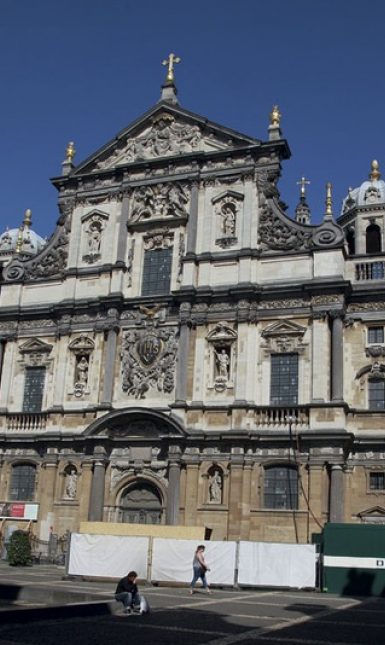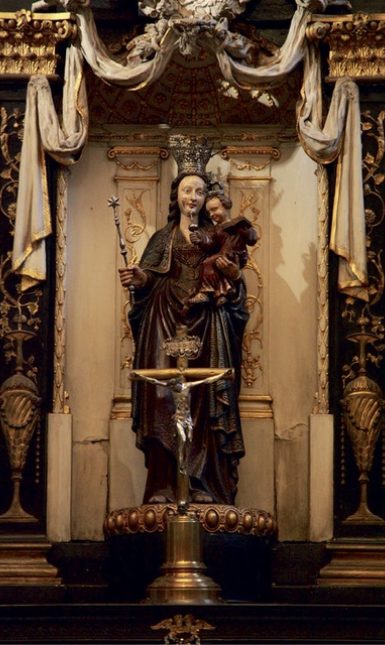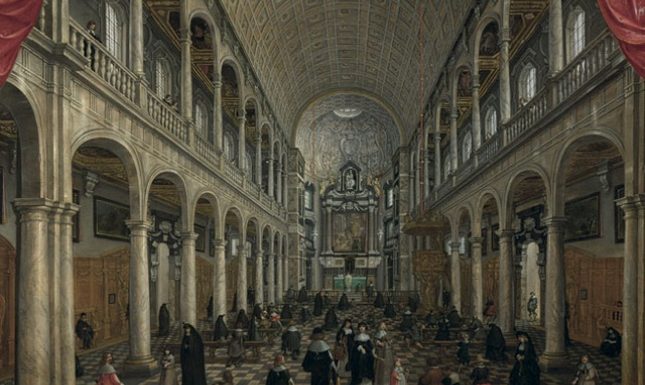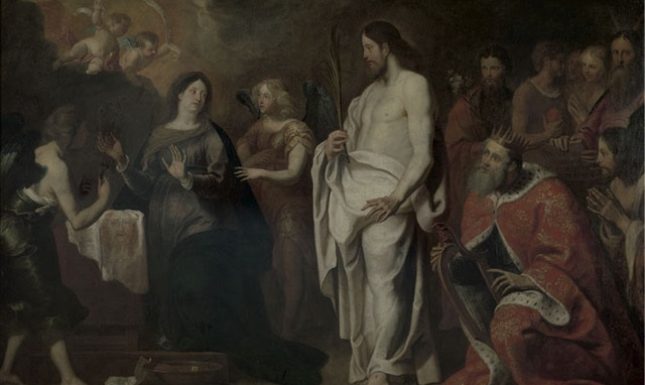Spiritual Daughters and Patronage
On 3 December 2020, followers of the LUCAS Museum Talks series were treated to a visual feast by Dr. Sarah Moran, who presented ‘Resurrecting the “Spiritual Daughters”: The Case of the Houtappel Chapel in the Jesuit Church of Antwerp’.
The focus of Dr. Moran’s presentation was the patronage of the Chapel of the Virgin, located in the Sint Carolus Borromeuskerk, a former Jesuit church in Antwerp that exemplifies Flemish Baroque art and architecture. The chapel is lavishly decorated: every surface decorated with colorful marble, painting, and sculptures—very much like the church itself. What inspires Moran most, however, is the fact that the chapel was built and decorated thanks to the patronage of four women: sisters Maria (1575–1649), Anna (1581–1674), and Christina Houtappel (1585–1657), and their cousin Anna ’s Grevens (1579/80–1638). The four women were members of a community known as the Spiritual Daughters, a community of women who made (non-permanent) vows of chastity and lived a life of piety.

The Jesuit Church, in Antwerp, dates to 1615-1621. The architecture and decoration of the church were integrated: the stone work was an integral part of the design and every surface was covered in expensive materials, paintings, and sculpture. Rubens had a hand in designing the decoration scheme and executed elaborate ceiling paintings (which were unfortunately destroyed in 1718). In the words of Moran, it was “an astonishingly richly appointed church”.

In her research of the patronage of the Chapel of the Virgin, Moran discovered documents which confirm that the chapel was formally under the patronage of the four women. The women were parties to a contract for the decoration of the chapel, which specified the materials to be used. Although Moran explained that we cannot know with certainty the extent to which the women influenced the decoration of the chapel, it is clear that the iconographic program embodied the ideals they held dear as Spiritual Daughters. In addition to the statue of the Virgin Mary, the chapel includes statues of the patron saints of the deceased members of the Houtappel and s’ Grevens family, and paintings by Gerard Seghers that glorify the Virgin Mary, namely Christ Returning from Purgatory to Greet his Mother and John the Evangelist Administering Communion to the Virgin Mary Accompanied by Three Women, both c. 1640s. This iconography, Moran points out, constitutes a defense of the most fundamental tenets of Catholicism (the power of saints and of the Virgin to intervene on behalf of sinners, the existence of purgatory, the spiritual value of virginity, and even the power of art in religion), which had been at the very heart of religious conflicts between Protestants and Catholics in the Low Countries.

As Moran explained, there is still so much to be uncovered about the patronage activities of the Spiritual Daughters—and, indeed, of women— in the Low Countries. Research such as Moran’s gives rise to fascinating questions. Was the Chapel of the Virgin a particularly feminine place of worship? How involved were the women in the discussions between the Jesuits and Rome with regards to construction-related spending for the church? Did the women have examples of other patronage by similarly-situated women? Did they influence others? Moran continues her research, and hopes that others will join her in recovering the important contributions of early modern female patrons in the Low Countries.
Dr. Moran’s lecture was drawn from her chapter of the same title in Women and Gender in the Early Modern Low Countries, 1500 – 1750, which she edited with Dr. Amanda Pipkin (Brill, 2019).

Catherine Powell is a PhD Candidate in art history at the University of Texas at Austin and a Kress Institutional Fellow at the Leiden University Centre for the Arts in Society (LUCAS). Her research focuses on the role of early modern women in the creation, production, and consumption of art in the Low Countries in the early modern period. She is particularly interested in challenging traditional methodologies in a bid to recover the lives and contributions of early modern women. Her dissertation concerns the Dutch collector, patron, and amateur botanist Agnes Block (1629-1704) and her use of social networks.


0 Comments